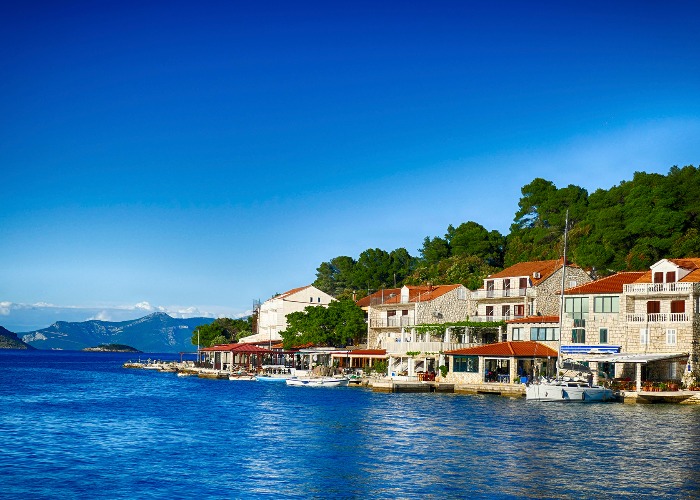Mljet is officially an island in Southern Dalmatia but the northwestern part of it was declared a national park in 1960. The whole island is 37 kilometers (23 miles) long and 3 kilometers (1.9 miles) wide while the national park covers an area of 5,375 ha (13,282 acres), including a part of a protected sea area.
Mljet or Melita (honey), as the old Greeks called this forested island, is situated to the south of the Pelješac peninsula. Apart from being special for its oblong shape and volcanic origin, dozens of gulches and pits make it even more special. The longest gulch is what Croats call Babino polje which is mythologically interesting. The story goes back to the old times, when Odysseus survived a shipwreck. He needed a shelter, so he used the advantages of one of Mljet’s caves. Now it is called the Odysseus cave.
The myths do not end there. Saint Paul the Apostle had apparently suffered a shipwreck near the island Mljet and spent a few month on it, preaching the Gospel.
National park Mljet includes two salt lakes — Veliko and Malo jezero (Large and Small Lakes). Just like the national park Krka, Veliko jezero of the island Mljet is enriched with a small island on which the Benedictine Monastery is situated. Both lakes seem to be adored by the visitors due to their low salinity and high water temperatures.
Favorable Mediterranean climate — hot summers and mild winters seem to be suitable for the tourists. If you are more of a silent being, do not worry, the island Mljet can offer you a pleasant and peaceful stay. If you are more of an adventurer — walking, bike riding and swimming can satisfy your love of adventure.
Mediterranean climate seems to be suitable for a variety of animals. Even though this national park has not been completely explored, certain animals have been discovered on the park territory: reptiles, birds and mammals. It is an interesting fact that snakes have been rarefied because of the mongooses that have been brought to island. Apart from snakes, they also eat birds.
3/4 of the island is covered in forest — due to that fact, it is frequently called The green island. There are also a couple of historical monuments located on the island — Benedictine Monastery and Roman ruins in the town of Polače.
